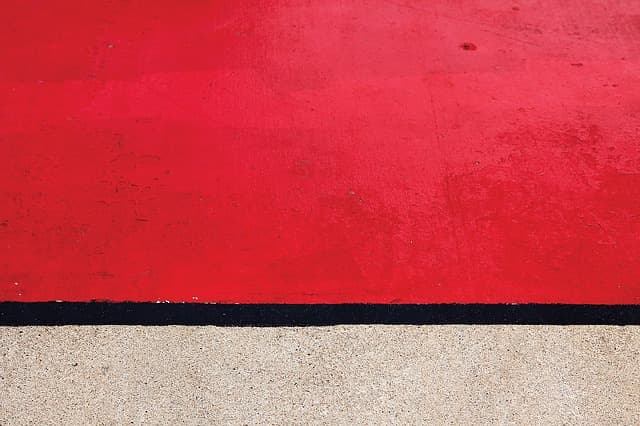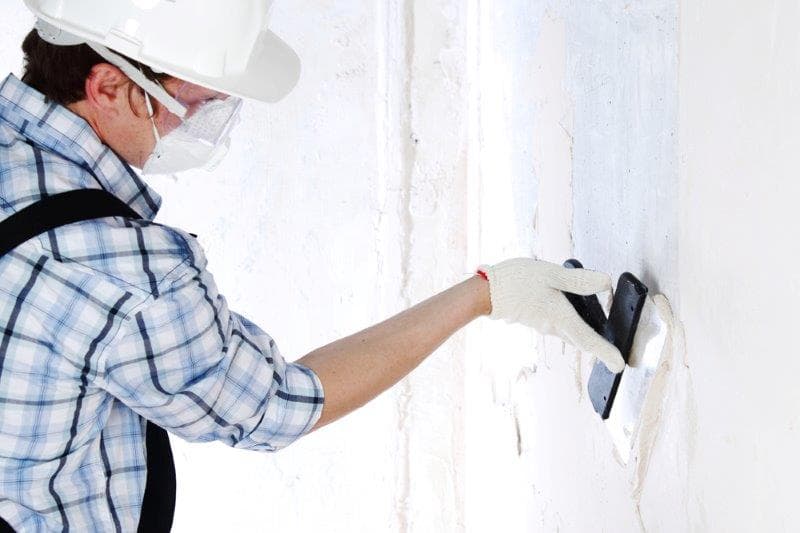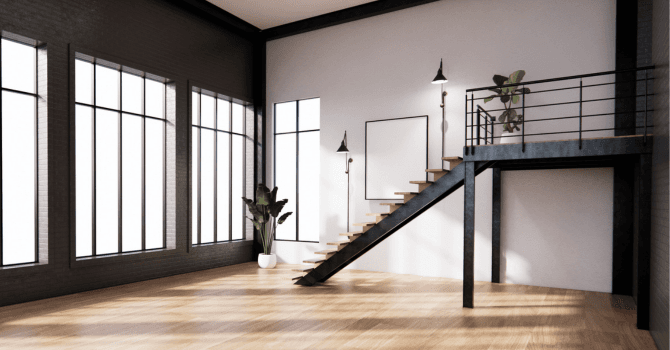Vinyl Paint: A Versatile Solution to Your Decoration Projects
By Editorial Team
Updated on February 5, 2024

Vinyl paint is grouped with similar water-based coatings and is considered a high-quality paint. From its adherence to its coverage, but ultimately, its ability to texturize surfaces makes it a decorator’s dream.
Vinyl Paint Composition and Properties

Source: Canva
Vinyl paint gets its name from the binding agent used in its composition: vinyl acetate, also known as PVA, or in layman’s terms, vinyl. The product in question is mainly sold by Lefranc Bourgeois, a French company, under the commercial brand Flashe. The latter is basically composed of one type of vinyl acetate known as polyvinyl acetate/vinyl ester of versatic acid (PVA/VeoVA).
The range of colours available is achieved using a combination of various pigments. For example, the green is made of eskolaite extract, a chromium oxide.
To that is added calcium and carbonate, serving as extenders. They’re insoluble additives mixed in with the binder and solvents found in paint. Here’s their intended purpose:
Improve flow
Reinforce mechanical properties
Affect permeable characteristics
Enhance gloss
Balance the paint film
In paint, additives are what render the finish either matte, semi-gloss, or textured. The textured finish will depend on the size of the additives. When it comes to textured vinyl acetate, calcium carbonate 45 or dolomite 45 are used.
Other additives are used in vinyl paint’s formula, such as polyphosphates.
Polyphosphates are dispersing or sequestering agents. With one or the other, the goal is to fight against a phenomenon known as flocculation. In a nutshell, it prevents pigments from binding together as flocs or flakes during all stages of the paint’s use.
Manufacturing
Storage
Application
Curing
Dispersing and sequestering agents are primarily used in acrylic paints on account of the lack of polymer film. This is also the case with latex-based paints.
Lastly, some components aren’t included on paint labels. As for the vinyl paint brand Flashe, it includes diisooctyl phthalate, a product serving as a plasticizer.
Vinyl Paint-Specific Benefits

Source: Canva
Durable & Hard-Wearing
The durability of vinyl paint starts with its formula. The type of binder used, in combination with the type of pigment, will influence the coated-on end result. Therefore, shades of white and yellow are among the colours that showcase the most obvious changes.
Much like with all acrylic paints, once the vinyl acetate is applied to the medium, the paint will go through a 4-step process, the quality of which is largely dependent on the pigment:
Water evaporation
Paint particle deformation
Coalescence
Curing
For example, for the first few days, vinyl paint will lose about 43% of its mass before stabilizing. What’s worthwhile to note here is that vinyl acetate is a paint with a particularly durable colour. Compared to acrylic or oil-based paints, vinyl paint has one of the most hard-wearing colours over time.
Long-term, vinyl paint must withstand:
Ozone
Heat (thermal aging)
Humidity
Exposed to such adverse conditions, vinyl paint exhibits similar characteristics as acrylic paints, but for the better. In fact, vinyl acetate, much like acrylic solutions, is rather unreactive to ozone, which is an oxidizing agent that primarily affects the polymer chain in oil-based paints.
However, vinyl acetate is more vulnerable to heat exposure and humidity. Thermal aging most notably affects the look of the paint film. As such, vinyl acetate loses 3-4% of its mass as a result of heat exposure and the absorption intensity of its binder decreases.
However, when compared, vinyl paint is much more resilient than others mentioned. For example, acrylic paints lose over 7% of their mass due to a higher water concentration found in their formula.
To wrap up this matter, let’s just say that humidity changes the visual appearance of vinyl paint. The latter is increasingly matte-looking after gaining in volume.
Low-Maintenance & Hassle-Free Application
This type of paint is made with a vinyl resin-based binder, making it especially flexible while still having exceptional adhesive properties, most notably on porous mediums. When mixed with alkyd, it turns into both exterior and interior paint.
The only thing to be on the lookout for during the application process is the curing of the first coat applied. In fact, if you don’t allow the first coat sufficient drying time, it may peel back from the newly applied coat.
How to Choose the Right Vinyl Paint for Your Project

Source: Canva
Paint Selection Guidelines
Steer clear of light colours, more specifically whites and yellows, as these hues are likely to turn yellow or fade over time.
Choose a paint based on the intended area (interior, exterior, humidity level, salt water exposure, immersion).
Apply anywhere between 3-6 coats based on the necessary thickness to withstand adverse conditions.
The components differ based on the constraints the paint must withstand. For example, exterior siding is subjected to immersion as well as sunlight. Therefore, the paint may have the following characteristics:
Titanium dioxide pigments (white and grey hues)
Tripolymer
Vinyl copolymer
Such a paint type has a 3-hour drying time, good adhesion, great flexibility, and optimal permeability. On top of that, one can say that it presents great resilience when faced with solvents, salt water, as well as abrasions.
Colour Options and Available Finishes
All colours are available provided that the intended medium isn’t located in an area that’s highly susceptible to adverse external challenges. As we already mentioned, pigment plays an important part in a paint’s lifespan.
As a result, when you have to focus on vinyl paint with specific properties, you’re naturally focusing on certain pigment types, therefore, limiting your colour options.
In the previous example, this type of paint was perfect to coat steel exposed to outdoor conditions and subject to very strenuous environments (immersion, abrasion, etc.). With such a case, the only colours available are white, medium grey, and shades of aluminum.
Without a doubt, vinyl paint is rarely used as a finishing coat, due to its cost. Hence why it’s typically favoured as a component within a mix of paint to create visual effects, or used as a sub-layer (primer) given its adhesion properties (drywall, finish coating, etc.).
Unearth 2024’s trending interior paint colours.
Decorative Finish Blend
In the realm of interior design, vinyl acetate holds its own. We mentioned it from the get-go: Additives make paint-made visual effects a possibility.
Paired with calcium carbonate 45 or dolomite 45, vinyl paint can be used to create a textured visual effect. Based on the paint’s formula and that of the mixed-in paint, you can either achieve a matte or semi-gloss finish.
Vinyl acetate mixes well with oil-based paints, but also with alkyd.
How to Apply Vinyl Paint

Source: Canva
5 Key Steps to Preparing Your Surface Prior to Painting
Step 1: Protect floors and furniture with masking tape and tarps.
Step 2: Smooth out the wall by filling in with putty holes and cracks.
Step 3: Dilute the paint with water if applied with a paint sprayer (or if the substrate is a porous mineral).
Step 4: Paint the edges with a paintbrush.
Step 5: Allow the first coat to dry for 3-4 hours (see manufacturer’s instructions).
Step 6: Apply a protective varnish.
Multi-Purpose Use of Vinyl Paint

Source: Canva
Home Ideas & Inspirations
Vinyl paint can be applied everywhere inside. By playing off the colours, you can paint:
Baseboards and moulding with bright colours
Walls in shades of white
A door using several different colours
A ceiling with a dark hue paired with light-coloured walls (optical illusion)
Geometric shapes
Murals
And more
There’s no limit to where your imagination can take you based on your material possessions since vinyl paint can also:
Coat your headboard
Decorate a wardrobe
Style concrete stairs
Cover a wooden banister
And more
Using Vinyl Paint Outdoors: What You Should Know
Typically, when used outdoors, vinyl acetate is paired with alkyd or oil-based paint. It’s thus used as a way to texturize paint or primer. However, some vinyl paints can be applied outside without mixing other substances.
Vinyl resin paints, as we already mentioned, formulated as a copolymer or tripolymer, can be applied outdoors. Depending on the richness of the composition, the paint will or won’t be designed for exterior use.
As a result, avoid solely relying on paint manufacturing labels and the cost of the paint you’re looking to purchase. An alkyd-acetate vinyl mix will likely be less expensive than applying paint that’s solely made with vinyl acetate.
Handy Tips for Vinyl Paint Maintenance and Upkeep

Source: Canva
Vinyl paint can be cleaned, but beware of the cleaning products used. For vinyl paint, limit yourself to the following:
Hot water
Dish soap or dishwasher liquid detergent
Avoid using hefty amounts of water when cleaning or rinsing a painted surface, as interior vinyl paint is typically water-permeable. As a matter of fact, it allows the medium to breathe and prevents water vapour generated in the home (breathing, bathroom, etc.) from resulting in mould growth.
Therefore, if you’re using too much water, it’ll seep through the wall’s material (e.g. drywall). The latter will not only take a while to dry, but it’ll also increase the paint’s volume during the drying time. After a while, you’ll start to notice that the colour is fading and looking rather matte.
Versatility and Efficiency: The Core Essence of Vinyl Paint
Overall, vinyl paint reveals itself to be an exceptional solution for a wide range of decoration projects, pairing versatility and durability. Its ability to adhere to multiple surfaces, humidity-resistance, and low-maintenance factors make it a preferred choice in high-traffic areas and humid spaces, such as kitchens or bathrooms. Furthermore, the range of available finishes allows for unlimited tailoring.
Get 3 renovation quotes for your painting project
RenoQuotes.com can help you get quotes for your painting project. By submitting your project, we’ll put you in contact with top-rated contractors. Fill in the form on the homepage (it only takes a few minutes), and you will get estimates from trusted professionals.
Dial 1-844 828-1588 to speak with one of our customer service representatives.
Looking for something else?
Related articles
The latest industry news, interviews, technologies, and resources.

Amanda Harvey
•03 Nov 2025
It has become common to preserve and experiment with concrete surfaces both inside and outside of the home. Modern homeowners are exploring the possibilities of painting concrete, offering an alternative to its more commonly known drab shades of grey.

Editorial Team
•21 Jul 2025
Cardboard-backed gypsum boards quickly became a staple in construction due to their ease of use. However, their most well-known downside remains a certain fragility and lack of impact resistance. Fortunately, there are many products available to repair damaged surfaces with a flawless finish.

Editorial Team
•07 Nov 2023
Are you curious about changing the layout of your mezzanine to improve the design of this living space, and are looking for some ideas before you begin this project? Take a peek at these wonderful examples of mezzanines to offer you some inspiration.

Christine Simard
•07 Nov 2023
With seasons changing fast, we suddenly feel the urge to redecorate our space. When we think of an idea for a simple, yet drastic change that is both easy and economical, repainting walls seems to be the logical option.

Editorial Team
•20 Oct 2025
Renovation projects are famous for being extremely stressful for those involved. Time, money, and uncertainty—all factors that can potentially lead to an anxiety-ridden situation. With that in mind, let’s move into problem-solving mode. The word "renovation" doesn’t have to be synonymous with “concern”! In this article, we’ll rather pair it with "preparation" and "organization." You read that right! There is a way to execute a renovation successfully and have a pleasant experience simultaneously.